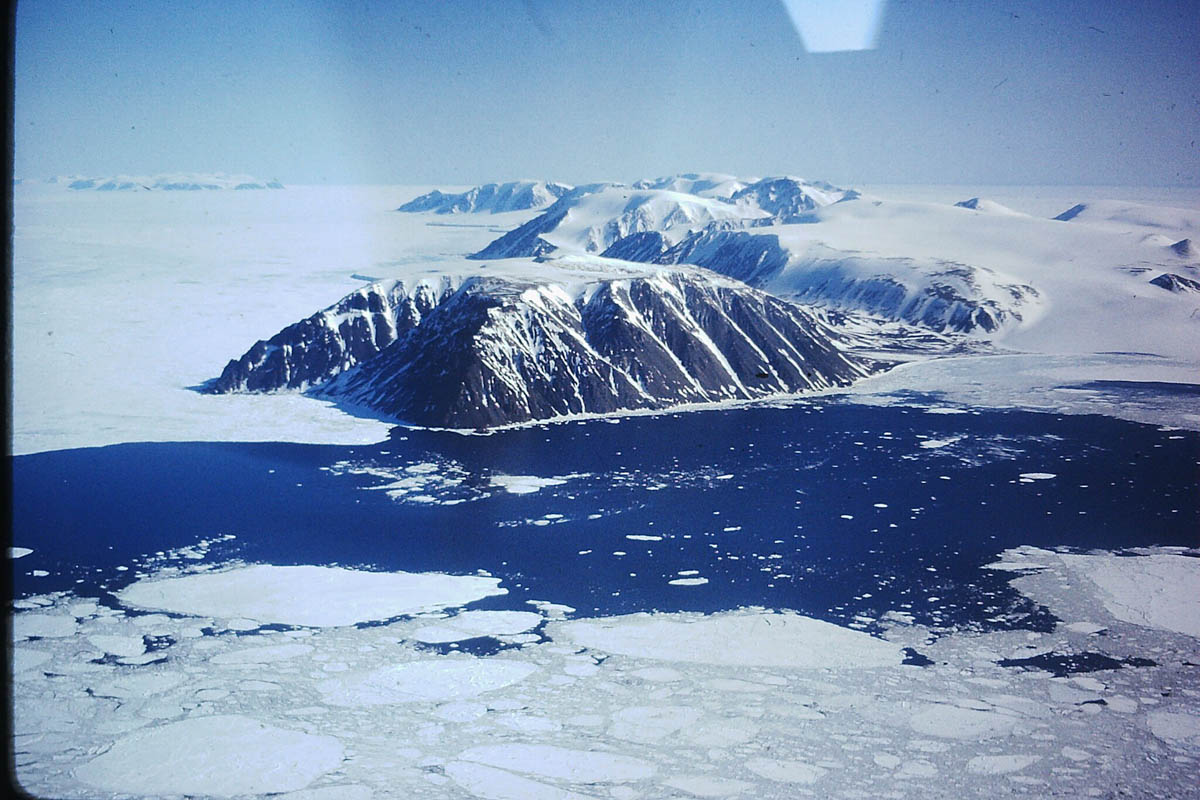Do you know anything about the North Water Polynya? How about Sarvarjuaq or Pikialasorsuaq? All of these names actually refer to the same location, which is a vast area in the waters between Greenland and Canada that is home to an abundance of marine life and remains ice-free throughout the Arctic winter.
Communities in the Qikiqtani region of Nunavut refer to it as Sarvarjuaq, which means “the big current.” It is referred to as Pikialasorsuaq, or “the great upwelling,” in the Kalaallisut language of Western Greenland. The absence of ice and upwelling, which raises nutrient-rich water to the ocean’s surface, combine to form one of the most productive ecosystems in the Arctic, the North Water Polynya.

Inuit communities have long benefited from this region’s richness and have fought for its preservation in both countries. A few years ago, the Inuit Circumpolar Councils of Canada and Greenland, with support from Oceans North, established the Pikialasorsuaq Commission, which offered suggestions on how Inuit should collaborate to oversee and manage their shared polynya.
These endeavours have now advanced significantly. In order to “share Indigenous knowledge and scientific information, work towards common conservation goals, and advance ecosystem-based management for the future of the Pikialasorsuaq,” Canada, Greenland, and the Inuit people signed a long-awaited agreement earlier this month.
REYKJAVIK—Today, the governments of Greenland and Canada signed a letter of intent to work together towards the protection of the North Water Polynya, known as Pikialasorsuaq in Greenlandic and Sarvarjuaq in Inuktitut.
“This long-awaited step marks a new chapter in efforts to protect an important ecosystem that communities in both countries rely on,” says Louie Porta, Executive Director at Oceans North.
The letter, signed by Greenland’s Minister for Agriculture, Self-Sufficiency, Energy and Environment and Canada’s Minister of Fisheries, Oceans and the Canadian Coast Guard, signals momentum in creating what would be the world’s first bilateral marine protected area. The North Water Polynya is an 85,000-square-kilometre area of open water in northern Baffin Bay that supports vast amounts of marine life. When the conditions in winter are right, an Arctic oasis emerges here, surrounded by sea ice. This polynya is a haven for fish, seabirds, and marine mammals that are drawn to it by the massive “spring bloom” of phytoplankton that forms the basis of the marine food web.
The key to the polynya’s formation is an ice bridge between Canada’s Ellesmere Island and Greenland that helps prevent polar pack ice from entering the open water. This literal and symbolic connection between the two countries has also been an Inuit migration route for centuries, facilitating travel across the bay. In the 19th century, the famous Qillarsuaq travelled from what is now called Ellesmere Island to northwest Greenland, reintroducing critical technologies, including the kayak, to the region and establishing cultural and relational ties that endure to this day. Communities on both sides of the bay continue to hunt and harvest around the polynya, and even those further away benefit from the species that migrate through the region on their way there and back.
Protecting this important place has long been a local priority. In 2013, Inuit Circumpolar Council (ICC) Greenland held meetings in Nuuk to discuss the concerns that communities around the polynya had about its future. The resulting work of the Pikialasorsuaq Commission, which Oceans North helped support, explored ways that Inuit from both countries can work together to monitor and manage this rich ecosystem. These efforts recently won ICC Greenland the United Nations Development Programme’s prestigious Equator Prize, which honours the profound impact of Indigenous peoples and local communities in addressing global challenges.
Today’s announcement, which includes the establishment of a joint steering committee with Inuit participation, will help ensure that the area is protected in a way that continues to sustain the communities that rely on it and brings further opportunities to advance their wellbeing.
“Inuit self-determination is intrinsically tied to the protection of Sarvarjuaq, a region of profound ecological and cultural significance. Inuit communities on both sides of Baffin Bay depend on the abundant resources of Sarvarjuaq for their subsistence and cultural continuity. This shared reliance fosters cultural connections that bind Nunavut and Greenland in a tapestry of common heritage,” said Olayuk Akesuk, President of the Qikiqtani Inuit Association.
“This letter of intent represents a significant milestone towards the successful protection of Sarvarjuaq, but more work needs to be done in partnership to ensure a sustainable future, one where our communities not only endure but prosper, and where the North Water remains a symbol of resilience and unity.”
Now that the letter of intent is signed, it’s vital that all parties set clear targets and timelines for the next steps towards protecting the North Water Polynya. “As our oceans change rapidly, it’s never been more urgent to protect them—and it makes sense to start in places where people have long been calling for it,” says Porta. “We look forward to everyone coming together and advancing the Inuit-led protection of this shared ecosystem.”
For more information or to arrange an interview, please contact:
Alex Tesar
Oceans North Newsletter
Communications Manager
Oceans North
atesar@oceansnorth.ca






